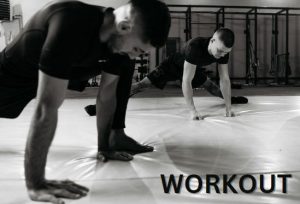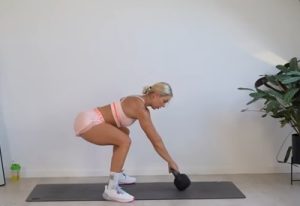Maintaining a consistent exercises routine can be daunting, but with the right exercises, it can be both simple and effective. A full-body exercise can encompass all the major muscle groups, leading to a well-rounded and balanced fitness regimen.
1- Plank Jacks exercises

Plank Jacks, a dynamic and engaging exercise, prove to be a remarkably effective approach to simultaneously target and engage multiple muscle groups including the abdominals, glutes, and shoulders. By incorporating this exercise into your fitness routine, you can experience comprehensive exercises that not only enhance core stability but also strengthens the lower body and upper body regions.
To execute Plank Jacks, commence by assuming the plank position, which entails supporting your body weight on your forearms and toes, forming a straight line from your head to your heels. This initial posture establishes the foundation of stability required for the exercise. Now, the movement unfolds as you initiate a controlled jump, propelling both of your feet outwards to the sides, creating a widened stance akin to a jumping jack motion.
The engagement of your core muscles is pivotal in maintaining proper form and balance during this action. As you swiftly bring your feet back together beneath your body, the challenge intensifies, demanding increased activation of your abdominal muscles to stabilize your trunk. This rhythmic motion of outward and inward foot movement not only ignites your core but also effectively works your glutes and shoulders.
To reap the full benefits of Plank Jacks, it is recommended to incorporate them into a structured exercises routine. Depending on your fitness level and goals, aim for a specific number of repetitions. As you progress, you can gradually increase the repetitions, and duration, or even explore variations like incorporating a push-up after each plank jack.
2- Jump Squats exercises
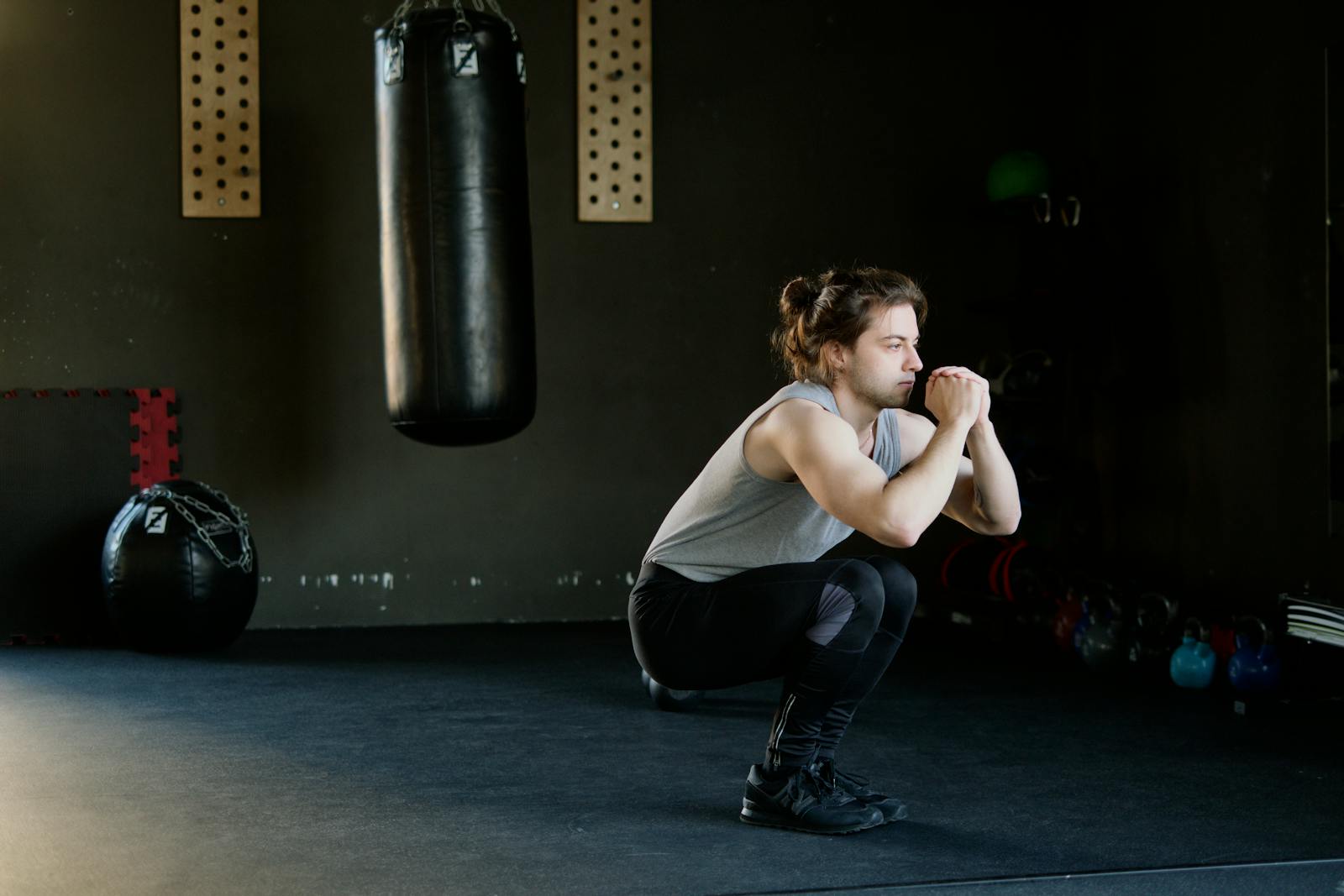
Jump Squats, a dynamic and high-impact exercise, hold the potential to not only elevate your cardiovascular health but also serve as a robust catalyst for enhancing leg strength, power, and overall lower-body athleticism. By integrating this plyometric movement into your fitness regimen, you can embark on a journey to not only amplify your endurance but also fortify the key muscle groups crucial for functional movement and athletic performance.
The execution of Jump Squats commences by assuming a foundational squat position, wherein you plant your feet shoulder-width apart and bend your knees, lowering your hips towards the ground. It is imperative to maintain proper alignment, ensuring your knees are tracking in line with your toes and your spine remains neutral.
From this poised squat position, you harness your energy and explode upwards, propelling your body into a forceful jump. This explosive leap off the ground demands the activation of fast-twitch muscle fibers, contributing to an increased vertical push and subsequent elevation. The controlled descent back to the starting squat position not only underscores your eccentric strength but also cultivates better control and stability.
The multifaceted benefits of Jump Squats encompass cardiovascular enhancement, wherein the rhythmic repetition of explosive jumps stimulates your heart rate, fostering improved circulation and oxygen delivery throughout the body. Simultaneously, the impact on your leg muscles, primarily quadriceps, hamstrings, and glutes, is significant. The repeated contraction and extension during each jump squat rep work towards sculpting lean muscle mass and boosting lower body strength.
Integrating Jump Squats into your fitness routine can be tailored to your specific goals. For beginners, starting with a moderate number of reps and gradually increasing as you progress ensures safe and effective incorporation. More advanced enthusiasts might explore variations such as incorporating weights or combining jump squats with other exercises for a full-body circuit.
As with any exercise, proper form is pivotal to preventing injury and maximizing benefits. It is crucial to land softly on the balls of your feet, distributing the impact evenly to protect your joints. Engaging your core muscles throughout the movement promotes stability and guards against undue strain on your lower back.
3- Lateral Lunges
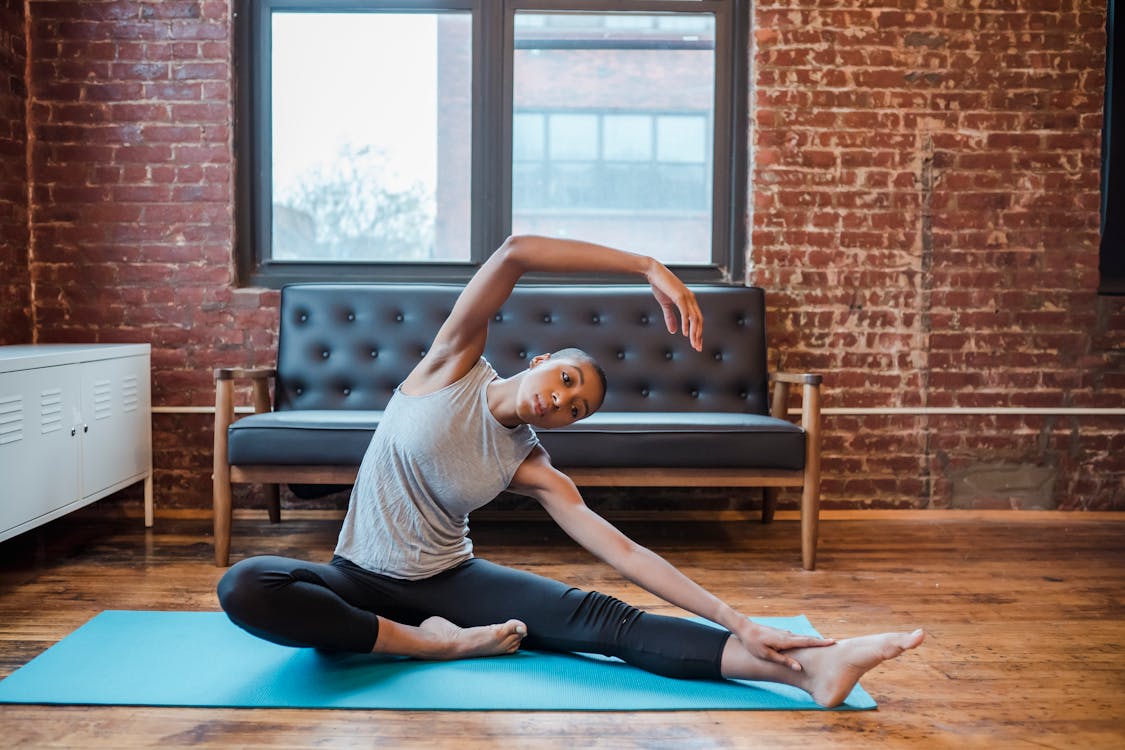
Lateral Lunges, a lateral movement of paramount importance, offer a distinctive avenue to zero in on and fortify key muscle groups within your lower body, including the quadriceps, glutes, and hamstrings. By incorporating this lateral lunge variation into your fitness regimen, you can embark on a journey that not only enriches your lower body strength but also enhances your overall flexibility, balance, and functional mobility.
To embark on the journey of Lateral Lunges, commence by standing tall, maintaining an erect posture that underscores the alignment of your head, shoulders, and hips. This foundational stance sets the stage for the lateral movement that follows. With deliberation, initiate the movement by taking a confident step sideways, ensuring your feet are comfortably wider than hip-width apart. As you descend into the lunge, focus on bending the knee of the stepping leg while simultaneously maintaining the extension of the opposite leg, resulting in a picturesque lateral lunge posture.
The depth of your lunge will largely depend on your flexibility and comfort, but the emphasis should be on preserving proper form and avoiding any strain on the knee joint. The sinking of your hips towards the ground engages your quadriceps and hamstrings in a harmonious effort, while your glutes play a pivotal role in stabilizing your body throughout the movement.
Returning to the upright position from the lateral lunge requires a concerted effort from the muscles of your inner and outer thighs, reinforcing both your adductors and abductors. It’s imperative to control the ascent, ensuring a controlled and steady rise to prevent any undue stress on your joints.
By alternating sides and repetitively engaging in lateral lunges, you are promoting a well-rounded lower body exercises that extends beyond the traditional linear movements. The lateral plane of motion targeted by this exercise contributes significantly to improved functional fitness, assisting you in movements you encounter in your daily life, sports, and activities.
Incorporating Lateral Lunges into your fitness regimen can be approached with a personalized strategy. Beginners may wish to start with a modest number of repetitions and gradually increase as confidence and strength develop. As you advance, experimenting with variations such as holding a dumbbell or kettlebell can further intensify the exercise, providing an additional challenge to your muscles.
4- Push-Ups
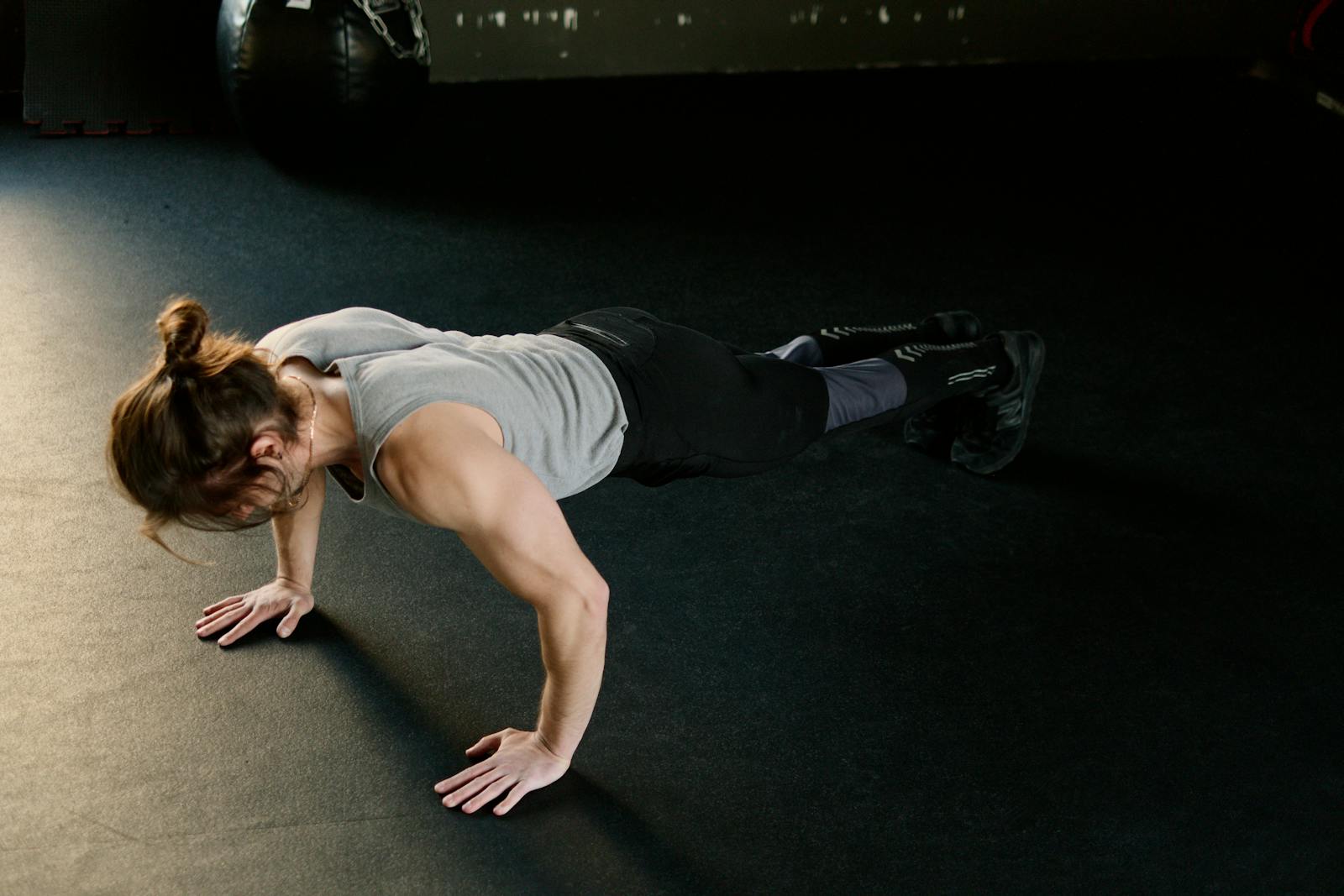
Push-ups, a quintessential and time-honored exercise, reign supreme as a fundamental cornerstone of strength exercises that systematically targets and fortifies key upper body muscle groups, including the chest, triceps, and shoulders. By incorporating this dynamic bodyweight movement into your fitness routine, you are embarking on a journey that not only cultivates upper body power but also enhances core stability and overall functional strength.
To engage in the art of push-ups, commence by adopting the plank position, a foundational pose where your body forms a straight line from head to heels, propped up on your hands and toes. This initial stance sets the stage for the push-up movement that ensues. With deliberate control, begin to lower your body towards the ground, allowing your elbows to bend at a 90-degree angle while maintaining close proximity to your torso. This controlled descent engages your chest muscles, particularly the pectoralis major, in a concentrated effort.
As you transition into the concentric phase of the push-up, the upward movement requires a forceful push through your palms, reactivating your chest muscles, while simultaneously enlisting the triceps and shoulders to assist in raising your body back to the starting plank position. This cyclical push-and-lower action, when repeated in succession, contributes to sculpting a robust upper body that boasts both strength and definition.
Push-ups encompass a plethora of benefits beyond mere muscle engagement. They serve as a dynamic form of core activation, demanding your abdominal muscles to work cohesively with your upper body muscles to maintain stability throughout the movement. Furthermore, the engagement of stabilizing muscles in your shoulders and back enhances posture, which has far-reaching effects on your overall biomechanics.
The versatility of push-ups extends to a range of variations and progressions that cater to different fitness levels and goals. Beginners can commence with modified push-ups, with knees resting on the ground, gradually transitioning to traditional push-ups as strength develops. For advanced enthusiasts, elevating the feet or incorporating variations such as diamond push-ups or decline push-ups introduces new challenges that foster continuous growth.
Incorporating push-ups into your fitness regimen can be strategically planned for optimal results. Depending on your fitness objectives, you can integrate them as part of a full-body exercise or focus on targeting specific muscle groups on designated exercise days.
5- Mountain Climbers

Mountain Climbers, an exhilarating and dynamic exercise, stand as a versatile and potent tool in your fitness arsenal, igniting not only cardiovascular vitality but also strategically engaging key muscle groups encompassing the abdominals, shoulders, and hips. By incorporating this full-body movement into your exercise routine, you are embarking on a journey that not only amps up your heart rate but also cultivates core strength, shoulder stability, and hip mobility.
The execution of Mountain Climbers commences by assuming a plank position, a foundational pose where your body forms a straight line from head to heels, supported by your hands and toes. This initial posture serves as the launchpad for the invigorating mountain-climbing motion that ensues. With a concerted and rhythmic drive, initiate the movement by drawing one knee towards your chest, mirroring the motion of ascending a mountain slope.
As the alternate knee is drawn towards your chest, your hips engage in a dynamic flexion, accentuating the involvement of your lower abdominal muscles. The controlled propulsion of your legs creates a sense of forward momentum, which, when executed with precision, emulates the sensation of ascending an actual incline.
The real magic of Mountain Climbers lies in their ability to simultaneously engage and challenge multiple muscle groups. The stability of your shoulders is paramount to supporting your upper body weight during the exercise, thereby fostering enhanced shoulder strength and integrity. The coordinated action of driving your knees towards your chest not only fires up your lower abs but also enlists the hip flexors and quadriceps in a harmonious effort.
To maximize the efficacy of Mountain Climbers and cater to diverse fitness levels, several modifications and variations can be explored. For beginners, starting with a moderate pace and gradually increasing intensity fosters a safe and gradual progression. Advanced practitioners can experiment with faster speeds, introducing plyometric elements by explosively switching legs mid-air, or incorporating additional challenges such as a sliding disc or resistance bands to amplify the exercise.
Integrating Mountain Climbers into your fitness regimen can be strategically orchestrated to reap optimal benefits. They can be woven into a high-intensity interval training (HIIT) routine or be used as a dynamic warm-up before engaging in other exercises. The versatility of this exercise allows it to seamlessly adapt to your fitness goals and preferences.
6- Glute Bridges
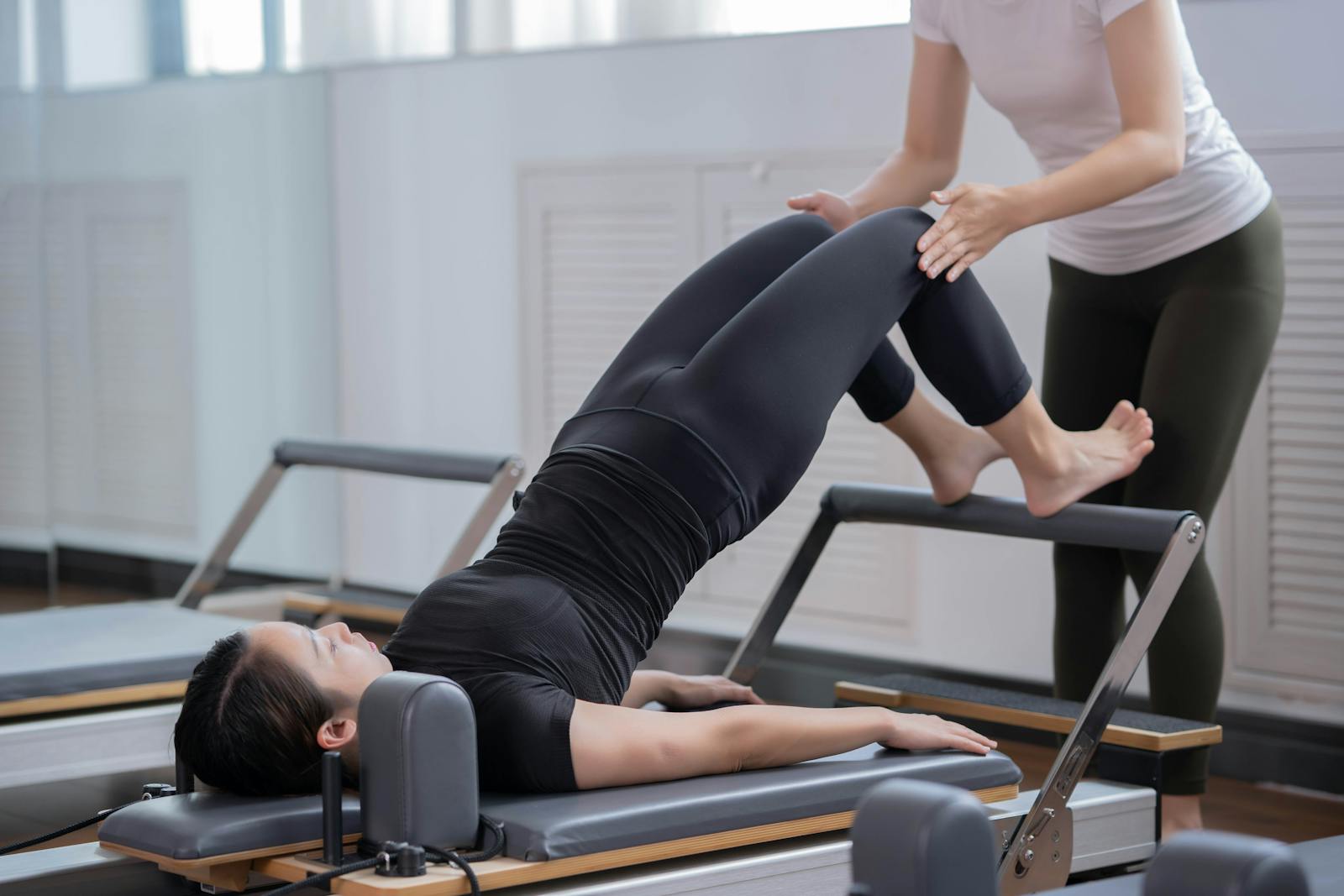
Glute Bridges, a fundamental and transformative exercise, hold the key to unlocking a host of benefits that extend far beyond mere aesthetics. By engaging in this deliberate movement that primarily targets the glutes and hamstrings, you are embarking on a journey that not only enhances your lower body strength but also contributes to improved posture, diminished lower back discomfort, and a heightened awareness of your body’s mechanics.
The pathway to mastering Glute Bridges commences by positioning yourself on your back, adopting a supine posture that aligns your head, shoulders, and spine. Your knees are bent, feet grounded firmly on the floor, and arms relaxed by your sides. This foundational stance serves as the launchpad for the gluteal transformation that follows.
With mindful intention, initiate the movement by pressing through your heels, activating your glutes and hamstrings to elevate your hips towards the sky. The orchestrated lifting motion creates a bridge-like structure with your body, with your shoulders, upper back, and feet forming the three anchor points. The apex of the bridge position engages your glutes at their peak contraction, contributing to muscle activation that is both intense and purposeful.
The static hold at the zenith of the bridge movement is a crucial component that demands mindful engagement. By maintaining the elevated position for a few seconds, you are effectively recruiting your glutes to bear the load, fostering endurance and resilience. This momentary pause also fosters an opportunity to connect with your body, fostering a deeper understanding of muscular engagement and promoting enhanced mind-muscle connection.
The controlled descent from the bridge position is as significant as the elevation itself. As you gently lower your hips back to the ground, your muscles undergo an eccentric contraction that plays an essential role in muscle development and overall strength. This controlled lowering also mitigates any undue stress on your lower back and ensures a seamless transition from one repetition to the next.
The holistic benefits of Glute Bridges resonate through multiple dimensions of fitness and well-being. As your glutes and hamstrings strengthen, your posture undergoes a transformation, aligning your spine and pelvis for optimal biomechanics. This alignment not only contributes to a more confident and poised physical presence but also aids in reducing lower back discomfort and potential pain caused by muscular imbalances.
To harness the full potential of Glute Bridges, consider incorporating them into a well-rounded fitness regimen. Depending on your goals, they can be included in a lower body strength exercise or seamlessly integrated into a dynamic warm-up routine.
7- Single-Leg Deadlifts
Single-Leg Deadlifts, a symphony of strength and balance, stand as an intricate yet immensely rewarding exercise that transcends traditional lower-body exercises. By embracing this nuanced movement that hones in on the hamstrings, glutes, and lower back, you are embarking on a transformative journey that not only fortifies key muscle groups but also cultivates stability, coordination, and functional mobility.
To embark on the artistry of Single-Leg Deadlifts, begin in an upright posture, channeling your focus into the alignment of your head, shoulders, and hips. This foundational stance serves as the canvas upon which the intricate movement unfolds. With intent and control, initiate the exercise by shifting your weight onto one leg, thereby initiating a harmonious partnership between strength and balance.
As the weight-bearing leg becomes your axis of stability, a symphony of muscle engagement is set into motion. The pivotal hinge at your hip, which serves as the fulcrum of the movement, orchestrates the controlled descent of your upper body toward the ground. Simultaneously, your opposite leg extends elegantly behind you, guided by the thread of muscular connection.
The elongation of your non-weight-bearing leg, while contributing to the aesthetic grace of the movement, is also strategically designed to emphasize the activation of your hamstrings and glutes. The controlled hinge at the hip fosters an eccentric contraction of your hamstrings, promoting muscle strength and resilience. Your glutes, in synergy with your lower back muscles, play a pivotal role in stabilizing and guiding the movement, thereby nurturing a cohesive partnership that transcends the isolated engagement of individual muscle groups.
The return to the upright position is an artful dance of balance and strength. As you draw your extended leg forward and your torso ascends, you engage your core in a symphony of activation, emphasizing stability and control. This orchestrated ascent, propelled by the concerted effort of your lower back and glutes, completes the movement with finesse, culminating in a state of equilibrium that showcases the essence of Single-Leg Deadlifts.
The harmonious integration of Single-Leg Deadlifts into your fitness routine can foster multidimensional growth. The exercise can be tailored to your fitness level, allowing beginners to focus on bodyweight variations while advanced practitioners can explore the addition of weights or resistance bands to amplify the challenge. The dynamic nature of this movement also makes it an excellent choice for functional exercises, mimicking real-life activities that require balance and stability.
8- Burpees

Burpees, a high-octane and all-encompassing exercise, stand as a testament to the marriage of cardiovascular intensity and full-body engagement, promising a transformative journey towards enhanced fitness and resilience. By embracing this dynamic movement that unleashes a symphony of muscle activation and elevated heart rate, you are embarking on an exhilarating path that not only amplifies your cardiovascular endurance but also targets multiple muscle groups for a comprehensive exercise experience.
To embark on the invigorating sequence of a Burpee, begin in a poised standing position, where your body stands as a monument to potential energy. This foundational stance serves as the launchpad for the kinetic chain reaction that follows. With purpose and determination, initiate the movement by swiftly dropping down, transitioning into a plank position. Your hands firmly plant on the ground, supporting your body weight, while your toes extend behind you, forming a straight line from head to heels.
The plank position opens the gateway to a realm of muscular engagement, as you proceed to complete a push-up. This orchestrated downward movement not only intensifies the activation of your chest, triceps, and shoulders but also underscores the significance of core stability. The controlled and deliberate push-up motion showcases the harmony between upper body strength and controlled movement execution.
The subsequent phase involves a dynamic jump, propelling your feet back towards your hands, as you transition from the plank position back to a squat position. The orchestrated jump back elicits a symphony of muscle engagement, with your quads, hamstrings, and glutes working cohesively to power the movement.
The crescendo of a Burpee reaches its zenith as you explosively propel your body upwards, embracing the freedom of flight through a jump in the air. This final leap is an embodiment of power, an assertion of your physical prowess as you transcend the force of gravity for a fleeting moment.
The orchestrated synergy of muscle engagement in a Burpee extends beyond a mere cardio exercise. The exercise targets multiple muscle groups, including but not limited to the chest, triceps, shoulders, core, quadriceps, hamstrings, and glutes. This holistic approach not only contributes to a sculpted physique but also fosters enhanced functional fitness that translates into everyday activities and sports.
Incorporating Burpees into your fitness regimen can be strategically orchestrated for optimal results. As a stand-alone high-intensity interval training (HIIT) exercise, or as part of a dynamic circuit routine, Burpees offer a versatile canvas for customization. The exercise can be modified to suit various fitness levels, with beginners focusing on a slower and controlled pace, while more advanced individuals might amplify the intensity with explosive jumps or adding weights.
9- Bicycle Crunches
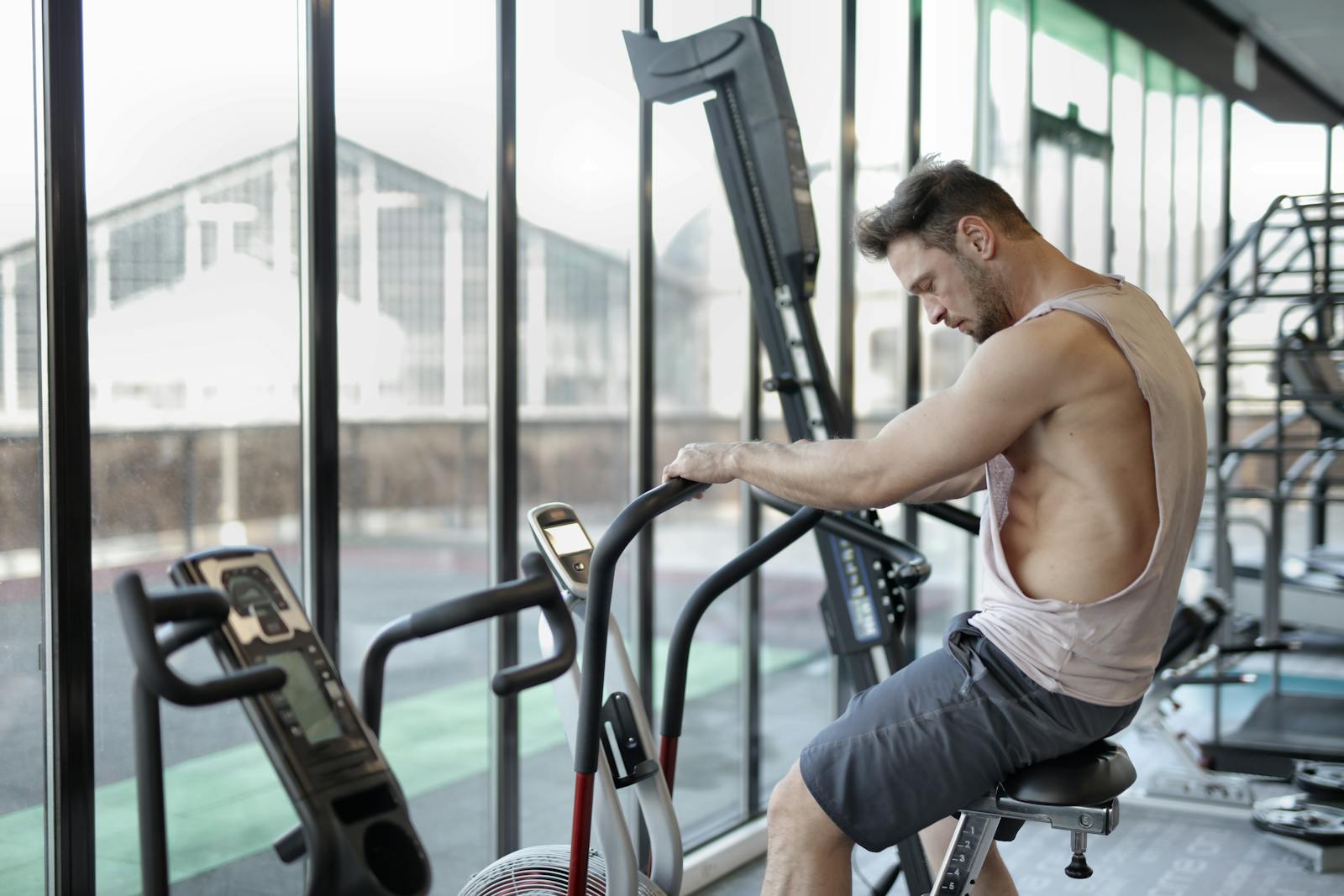
Bicycle Crunches, a dynamic and multi-dimensional exercise, emerge as a quintessential cornerstone in the realm of abdominal exercises, offering a symphony of benefits that extend beyond core muscle engagement. By embracing this intricate movement that intricately targets the abdominal muscles, while concurrently enhancing balance and coordination, you embark on an empowering journey towards sculpted abs, improved stability, and heightened body awareness.
To embark on the journey of Bicycle Crunches, position yourself on your back, creating a tableau of readiness for the movement that follows. Your knees are bent, feet lifted slightly off the ground, and hands gently cradling the sides of your head. This foundational posture not only forms the canvas for the movement but also underscores the significance of maintaining proper neck alignment throughout the exercise.
With deliberate intention, initiate the movement by drawing your upper body off the ground, engaging your core muscles as you bring one elbow towards the opposite knee. Simultaneously, extend the opposite leg forward, creating a dynamic cycle of motion akin to pedaling a bicycle. The orchestrated movement resembles a graceful dance of opposition, as your upper body and lower body engage in a coordinated symphony.
The engagement of your core muscles in Bicycle Crunches is multi-faceted and strategic. As you rotate your torso to bring the elbow towards the knee, your obliques play a crucial role in the twist, facilitating a comprehensive and holistic activation of the abdominal muscles. The extension of the opposite leg demands the involvement of your lower abdominal muscles, fostering a balanced and well-rounded approach to core engagement.
Beyond the realm of abdominal sculpting, Bicycle Crunches contribute significantly to improving balance and coordination. The alternating motion challenges your body’s ability to stabilize and synchronize movements, thereby fostering enhanced proprioception and spatial awareness. This holistic approach to body mechanics extends far beyond exercise, translating into improved functional fitness in everyday activities and sports.
The orchestrated rhythm of Bicycle Crunches resonates through varying levels of fitness. Beginners can start with a controlled and deliberate pace, focusing on mastering the movement’s mechanics and maintaining proper form. For more advanced practitioners, increasing the tempo and intensity can amplify the challenge, adding an element of cardiovascular engagement to the exercise.
Incorporating Bicycle Crunches into your fitness regimen can be seamlessly orchestrated for optimal results. They can be included as part of a dedicated abdominal exercise routine, a core-focused circuit, or even as a dynamic warm-up to prime your body for more intense exercise sessions.
10- Superman
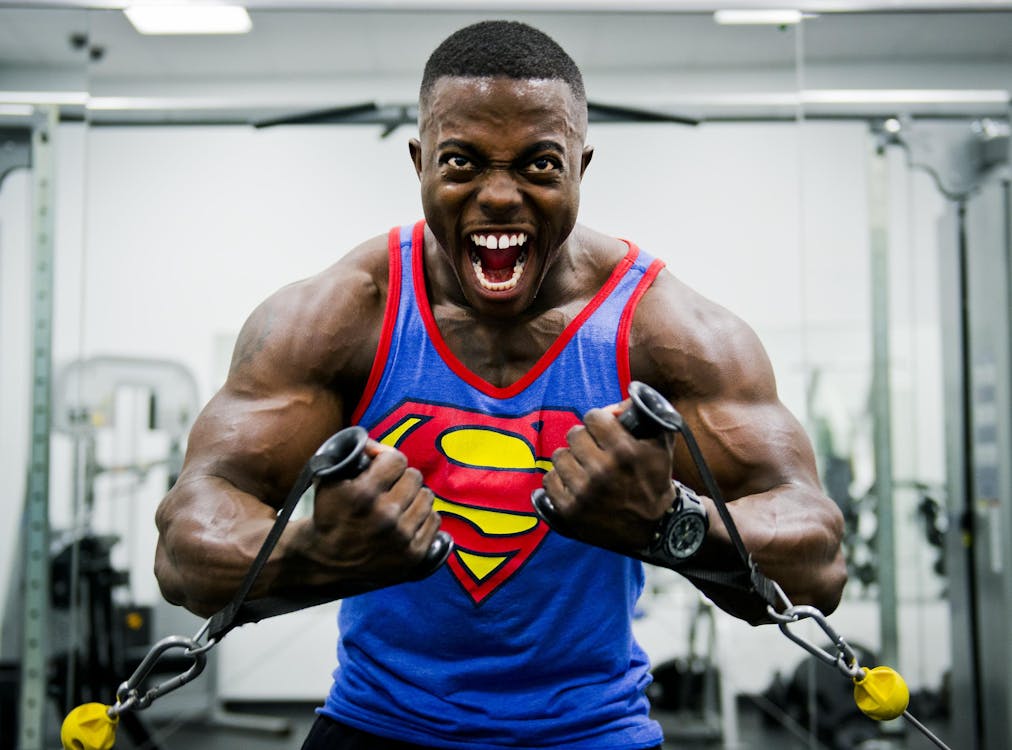
Superman, a triumphant and empowering exercise, stands as a beacon of strength and resilience, offering a focused and impactful approach to targeting the lower back and glutes. By embracing this evocative movement that serves as a testament to your dedication to a strong and healthy body, you embark on a transformative journey that not only enhances muscular engagement but also contributes to improved posture, diminished lower back discomfort, and a heightened sense of body awareness.
To embark on the dynamic voyage of the Superman exercise, position yourself on your stomach, creating an unwavering foundation for the symphony of movement that follows. Your arms are extended forward, your palms facing the ground, while your legs rest flat on the floor behind you. This foundational posture not only readies your body for the exercise but also emphasizes the importance of proper alignment and muscular engagement.
With mindful intention, initiate the movement by simultaneously lifting your arms, chest, and legs off the ground, evoking the iconic image of the heroic figure in flight. The orchestrated ascent is not merely a demonstration of strength but also a testament to your dedication to self-improvement. As your arms and legs elevate, the muscles of your lower back and glutes engage in an intricate dance of activation, creating a symphony of strength that reverberates through your body.
The pinnacle of the Superman exercise is the orchestrated hold at the apex of your ascent. By maintaining the lifted position for a few seconds, you invite your muscles to engage in an isometric contraction, fostering endurance and promoting enhanced muscular resilience. This momentary pause serves as an opportunity to connect with your body, fostering a deeper understanding of muscular engagement and promoting a heightened mind-muscle connection.
The controlled descent from the Superman position is a deliberate act of strength and control. As you gently lower your arms, chest, and legs back to the ground, your muscles undergo an eccentric contraction that is pivotal in muscle development and overall strength. The orchestrated return to the starting position completes the movement with finesse, culminating in a state of equilibrium that mirrors the poised posture of the superhero figure.
The benefits of the Superman exercise extend far beyond the realm of muscular engagement. By targeting the muscles of the lower back and glutes, this exercise contributes significantly to improved posture, which has a far-reaching impact on overall biomechanics and alignment. The activation of the lower back muscles serves as a safeguard against lower back discomfort and potential pain caused by muscular imbalances.
To maximize the efficacy of the Superman exercise, consider incorporating it into a well-rounded fitness regimen. It can be seamlessly integrated as part of a dedicated back-strengthening routine, a posture-improving circuit, or even as a dynamic warm-up to prime your body for more intense exercise sessions.
Conclusion
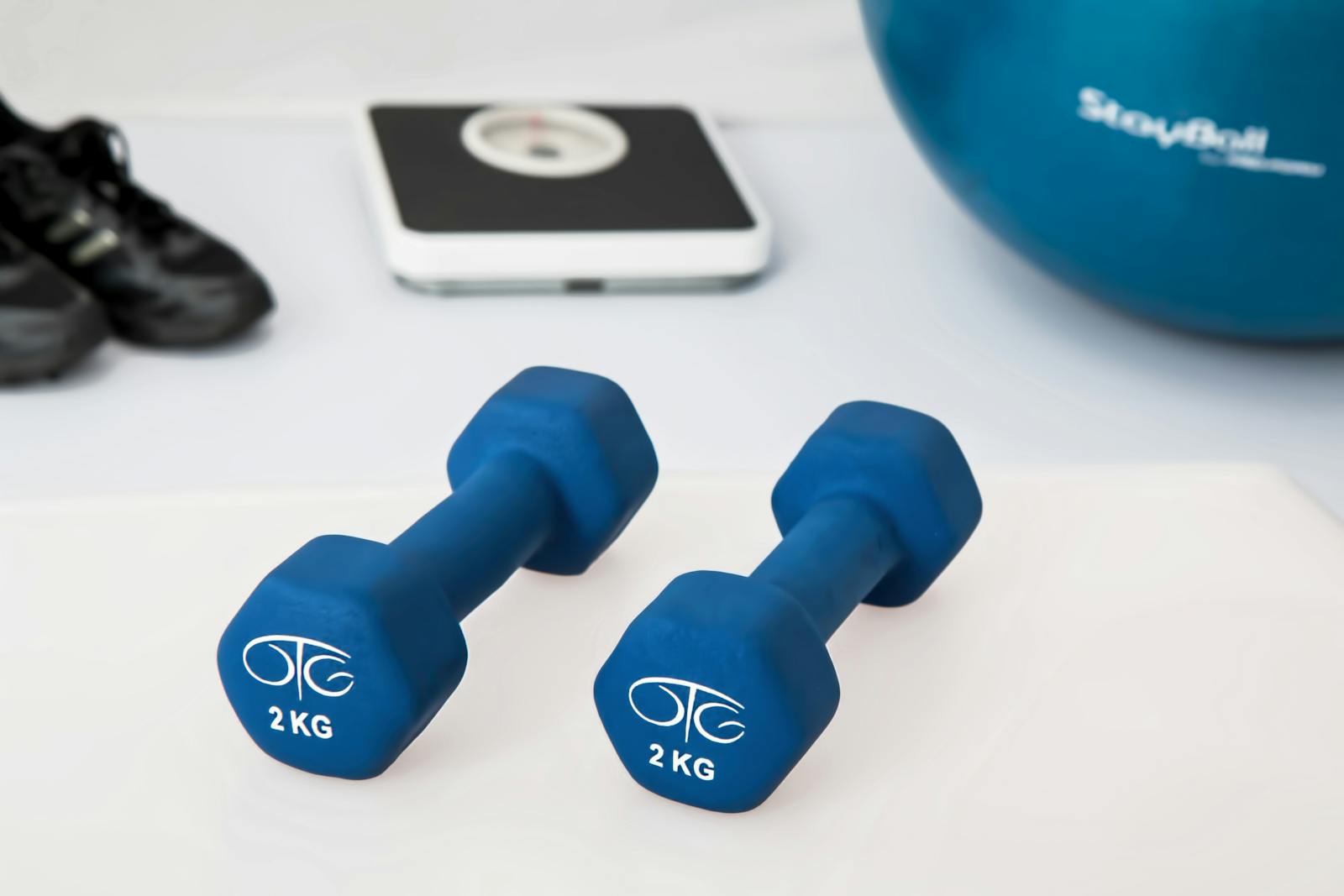
The array of exercises detailed in this comprehensive guide presents a tapestry of fitness possibilities, each movement a brushstroke contributing to a masterpiece of strength, resilience, and vitality. From the explosive power of Plank Jacks to the balletic grace of Single-Leg Deadlifts, these exercises weave together a symphony of motion that transcends traditional exercises. The intricacies of form, the harmony of muscle engagement, and the holistic benefits unveiled in each movement illuminate a path toward a stronger, more agile, and empowered version of oneself.
As we navigate through the dynamic landscape of fitness, it becomes evident that these exercises are not just isolated actions but rather chapters in a narrative of holistic well-being. Each exercise, from the foundational Push-Ups to the dynamic Burpees, offers a unique gateway to sculpting a robust physique and cultivating a resilient spirit. With every repetition, we are nurturing not only our physical prowess but also embracing the mental fortitude required to persevere through challenges.
Beyond the physical gains lie a profound connection between body and mind, a reminder that each movement is an opportunity to celebrate the remarkable capabilities of the human form. Whether through the graceful Bicycle Crunches or the triumphant Supermans, we are invited to explore the profound synergy between strength, balance, and self-awareness. In the pursuit of a healthier and more vibrant existence, these exercises serve as our faithful companions, guiding us towards a harmonious union of body, mind, and spirit. So, let us step onto this journey with unwavering commitment, knowing that each repetition is a brushstroke, each movement a note, and together, they compose the opus of our transformative voyage towards a life of vitality and empowerment.




